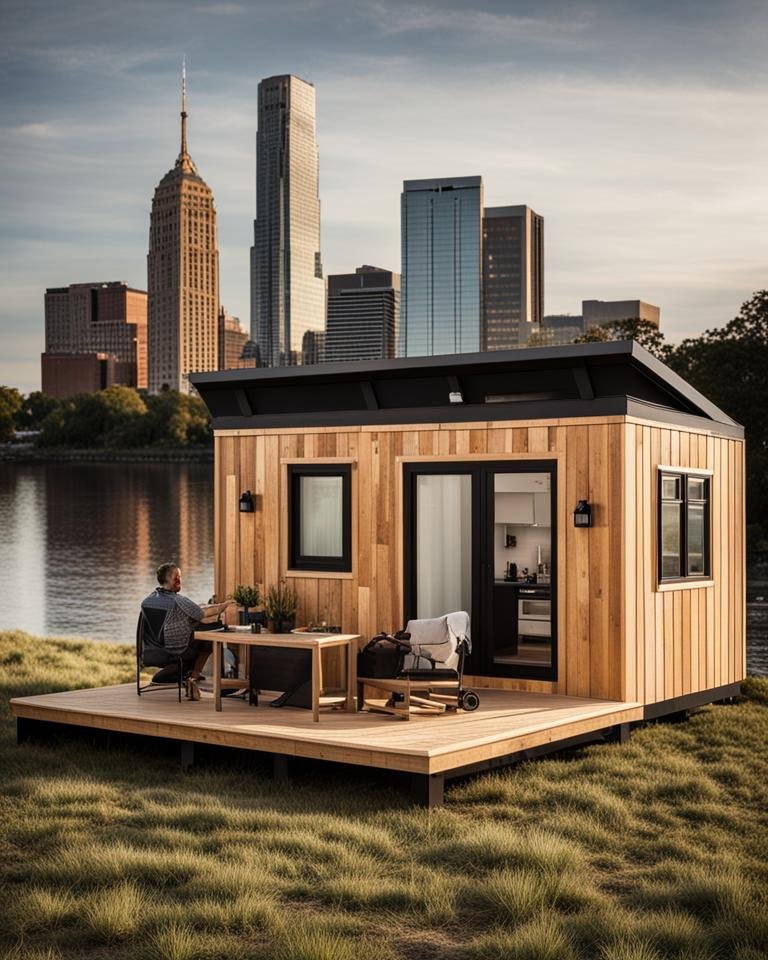How Trump’s Presidency Could Impact the Tiny Home Industry: A Deep Dive
The tiny home movement has grown from a niche interest to a significant trend that appeals to a broad spectrum of people, including those seeking affordable housing, eco-friendly living, or a minimalist lifestyle. With the election of Donald Trump, however, many wonder how his administration’s policies could influence the future of this burgeoning industry. In this comprehensive analysis, we will explore the potential effects of Trump’s presidency on the tiny home market, diving into economic policies, zoning regulations, environmental considerations, and housing affordability. We’ll cover the pros and cons of each aspect and offer actionable steps for those involved in or interested in the tiny home movement.
Economic Policy and Its Effects on Tiny Home Demand
Pro: Economic Growth Boosts Consumer Spending Trump’s presidency has been marked by a focus on economic growth through measures such as tax cuts and deregulation. These policies can lead to increased disposable income for middle- and upper-class households, potentially benefiting the tiny home industry. A stronger economy means that consumers have more resources to consider alternative housing options, such as tiny homes, which are often more affordable and environmentally sustainable compared to traditional housing.
Con: Trade Policies Could Drive Up Costs On the downside, Trump’s administration has been known for its aggressive trade policies, including tariffs on imports. Materials like lumber, steel, and certain eco-friendly building products may become more expensive as a result. This could lead to higher costs for tiny home builders, such as Nomadic Structures Tiny Homes, which focus on using sustainable, high-quality materials. These increased costs may be passed down to buyers, making tiny homes less accessible for some.
Actionable Step for Builders: To mitigate these potential cost increases, builders should explore partnerships with domestic suppliers and invest in bulk purchasing agreements to lock in prices. Using alternative, locally sourced materials can also help maintain competitive pricing.
Zoning Regulations and Local Community Development
Pro: Potential for Deregulation to Ease Restrictions Trump’s administration is known for its emphasis on deregulation and reducing federal oversight. This could benefit the tiny home industry by encouraging more flexible zoning laws that allow for the development of tiny home communities. In many areas, strict zoning laws prevent tiny homes from being legally placed on private land or in community developments. A push for deregulation could open doors for more tiny home neighborhoods, making them a more mainstream option for affordable housing.
Con: State and Local Resistance Remains a Barrier Despite potential deregulation efforts at the federal level, zoning and building regulations are largely controlled by state and local governments. Some municipalities remain resistant to the idea of tiny homes, often citing concerns about infrastructure, property taxes, and the visual impact on neighborhoods. Without widespread local support, the growth of tiny home communities may still face significant hurdles.
Actionable Step for Advocates and Buyers: Get involved with local planning boards and attend public meetings to advocate for tiny home-friendly policies. Collaborating with community organizations and showing successful examples of tiny home developments can also help shift public opinion and municipal stances.
Environmental and Sustainability Impacts
Pro: Cost Reductions Due to Relaxed Environmental Regulations Trump’s administration has often rolled back environmental regulations to promote business interests. This could benefit tiny home builders who might face fewer compliance hurdles, allowing them to reduce costs. Companies like Nomadic Structures Tiny Homes, which already prioritize eco-friendly practices, could use these relaxed regulations to streamline certain processes, providing competitive pricing while maintaining sustainable practices.
Con: Reduced Federal Support for Renewable Energy However, Trump’s administration tends to focus on traditional energy sources and may not prioritize renewable energy incentives. For tiny home builders who rely on solar panels and other renewable energy installations, this could make these eco-friendly features more costly. Without federal tax credits or grants to subsidize renewable energy technology, consumers might be less inclined to invest in fully sustainable tiny homes.
Actionable Step for Builders and Consumers: Seek out state-level and private grants that support renewable energy and sustainability initiatives. Many states have their own programs that incentivize solar panel installations and energy-efficient building practices.
Housing Affordability and Financing
Pro: Tax Benefits That Increase Buyer Confidence One of the hallmarks of Trump’s presidency has been tax reform, which often benefits middle- and upper-income earners. With increased disposable income, more individuals may be able to afford home purchases, including alternative housing like tiny homes. This increased purchasing power can encourage interest in tiny homes, known for their affordability and minimalistic lifestyle.
Con: Limited Support for Affordable Housing Initiatives While Trump's administration may boost the economy, it is not known for extensive affordable housing initiatives. Without strong federal programs aimed at making home ownership accessible to lower-income families, many individuals may still find it challenging to secure financing for a tiny home. Traditional financial institutions often hesitate to lend for non-standard housing options due to the lack of permanent foundations, which means tiny home buyers often need creative solutions.
Actionable Step for Buyers: Research alternative financing options, such as personal loans or working with credit unions that are more open to non-traditional home purchases. Builders can also partner with financing companies that specialize in tiny homes to offer buyers tailored loan programs.
Future Outlook: Adaptation and Resilience in the Tiny Home Industry
Despite potential challenges posed by Trump's policies, the tiny home industry is known for its adaptability. Builders like Nomadic Structures Tiny Homes can continue to thrive by emphasizing high-quality, sustainable construction and offering designs that appeal to both eco-conscious consumers and those looking for affordable housing solutions.
Prospective Growth Areas:
Local and State Initiatives: While federal support may be limited, local and state-level programs promoting affordable, sustainable housing could lead the way. Advocates and builders can focus on these areas to foster community support and drive demand.
Community Involvement: Grassroots movements and community-focused developments can help overcome local resistance to zoning changes and build public enthusiasm for tiny homes.
Challenges to Watch:
Economic Shifts: Changes in economic stability could impact consumer willingness to invest in new homes, including tiny homes. Builders and buyers should keep an eye on economic forecasts and adapt accordingly.
Financing Hurdles: Securing funding for tiny homes will likely remain a challenge unless more financial institutions begin to adapt their lending practices.
Conclusion: The future of the tiny home industry under Trump’s presidency presents both opportunities and challenges. While economic growth and deregulation could promote expansion, increased material costs and reduced support for renewable energy pose potential obstacles. Builders like Nomadic Structures Tiny Homes, with a commitment to sustainable and affordable solutions, are well-positioned to adapt and lead in this evolving market.
For those interested in learning more about tiny home options and how they fit into a sustainable lifestyle, visit our contact page. Take the first step toward a future of innovative and eco-friendly living.
Ready to Start Your Build?
READ MORE LIKE THIS:
Author Profile: Jud Lang
Jud is a 37-year-old Oregon native with a passion for tiny homes, the great outdoors, and life’s simple pleasures. When he’s not exploring the Pacific Northwest with his dog, Rory, and his wife, Alyssa, he’s diving into all things tiny homes—designing, building, and sharing his insights to inspire others to live large in small spaces.








